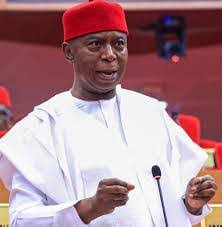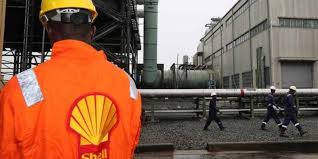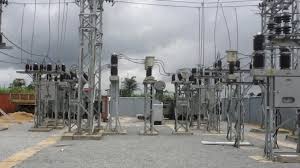Oil & Energy
Drought Dims Hydropower’s Promise

Hydropower is the world’s single largest source of green energy. On a global scale, hydropower plants produce more energy than all other renewable power sources combined.
However, the growth rate of new hydropower capacity has tapered off in recent years, and the sector is plagued by serious current and future problems, from increased incidents and intensity of droughts in a changing climate, and major negative environmental externalities associated with mega-dams.
Hydropower offers a critical benefit that other renewable energies don’t. It creates energy around the clock unlike solar and wind energy, which are dependent on weather patterns and therefore highly variable.
For this reason, hydropower is an extremely attractive option for river-endowed nations that want to boost their clean energy production levels without compromising grid stability or energy security. But in recent years, investment in expanded hydro has dropped off.
“In the last five years the average growth rate was less than one-third of what is required, signaling a need for significantly stronger efforts, especially to streamline permitting and ensure project sustainability”, the International Energy Agency (IEA) reported last year.
It continued that “Hydropower plants should be recognised as a reliable backbone of the clean power systems of the future and supported accordingly”.
But in recent years hydropower has not proved to be as reliant as its investors had hoped. Widespread droughts associated with climate change have caused rivers to run lower or even dry up entirely, causing seriously negative (literal) downstream effects for hydropower production plants.
In 2022, intense droughts in China’s Yangtze River basin slashed developed hydropower potential (DHP) by 26%, causing critical shortages and spurring an uptick in coal-fired power production.
In the last few years similar problems have cropped up in Brazil, Ecuador, the United States, and the Mediterranean region, too.
Critically, these are not isolated or one-off incidents; the risk of similar extreme droughts in the future rises by nearly 90% in a number of climate change scenarios, notably SSP585.
“Since September, daily energy cuts have lasted as long as 14 hours”, the New York Times recently reported from Quito, Ecuador.
“Highways have turned an inky black; entire neighborhoods have lost running water, even internet and cell service”, it added.
Not only does this have enormous implications for day-to-day life, these blackouts reverberate through the national economy. It is estimated that for every hour of blackout, Ecuador loses $12 million in productivity and sales.
Climate scenarios are just one of the factors deterring investors away from new hydropower mega-projects.
In the United States, investments in large hydropower plants all but drief up due to the simple fact that “there are no suitable river locations in the US for new ones”, according to recent reporting from CleanTechnica.
And the ones that do exist are associated with major ecological disruptions, changing flood patterns and blocking salmon runs for tens of millions of fish, among other environmental issues.
“There are certainly rivers in other countries which could be tapped using conventional hydropower technology, but not in the US”, Frederick Hasler wrote for CleanTechnica.
“Going forward, current US hydro needs to be maintained, but cannot be significantly increased”, he said.
And there are indeed major projects being planned in the rivers of other countries, but these are not without their own problems.
In the Congo, plans for the world’s largest hydropower project have been stalled for years after much enthusiasm at the outset. Some blame the Democratic Republic of the Congo’s poor governance for the Grand Inga dam’s failure to launch, while others point to a revolving door of international partners, a blisteringly high up-front cost of around $80 billion in one of the world’s poorest nations, and “deep concerns about the project’s environmental and social impact” according to reporting from the BBC.
But the need for the Grand Inga is enormous and impossible to ignore. Around 600 million people in Sub-Saharan Africa lack access to power completely, making electrification a critical step for economic and social development in the region.
But Africa does not have the luxury of emitting greenhouse gases indiscriminately as the developed world has done over the past 150 years.
Instead, the continent is under enormous international pressure to “leapfrog” over fossil fuels and straight to the development of clean energy systems.
It’s hard to imagine how this will be possible without large-scale hydropower.
By: Haley Zaremba
Oil & Energy
Nigeria Loses More Crude Oil Than Some OPEC Members – Nwoko

Nigeria’s losses due to crude oil theft has been said to be more significant than those of some other members of the Organisation of Petroleum Exporting Countries(OPEC).
The Chairman, Senate Ad- hoc Committee on Crude Oil Theft, Senator Ned Nwoko, made this known in an interview with newsmen in Abuja.
Nwoko noted with dismay the detrimental impact of the issue, which, he said include economic damage, environmental destruction, and its impact on host communities.
According to him, the theft was not only weakening the Naira, but also depriving the nation of vital revenue needed for infrastructure, healthcare, education and social development.
The Senator representing Delta North Senatorial District described the scale of the theft as staggering, with reports indicating losses of over 200,000 barrels per day.
Nwoko disclosed that the ad hoc committee on Crude Oil Theft, which he chairs, recently had a two-day public hearing on the rampant theft of crude oil through illegal bunkering, pipeline vandalism, and the systemic gaps in the regulation and surveillance of the nation’s petroleum resources.
According to him, the public hearing was a pivotal step in addressing one of the most pressing challenges facing the nation.
‘’Nigeria loses billions of dollars annually to crude oil theft. This is severely undermining our economy, weakening the Naira and depriving the nation of vital revenue needed for infrastructure, healthcare, education, and social development.
‘’The scale of this theft is staggering, with reports indicating losses of over 200,000 barrels per day more than some OPEC member nations produce.
‘’This criminal enterprise fuels corruption, funds illegal activities and devastates our environment through spills and pollution.
‘’The public hearing was not just another talk shop; it was a decisive platform to uncover the root causes of crude oil theft, bunkering and pipeline vandalism.
‘’It was a platform to evaluate the effectiveness of existing surveillance, monitoring, and enforcement mechanisms; Identify regulatory and legislative gaps that enable these crimes to thrive.
‘’It was also to engage stakeholders, security agencies, host communities, oil companies, regulators, and experts to proffer actionable solutions; and strengthen legal frameworks to ensure stricter penalties and more efficient prosecution of offenders”, he said.
Nwoko noted that Nigeria’s survival depended
Oil & Energy
Tap Into Offshore Oil, Gas Opportunities, SNEPCO Urges Companies

Shell Nigeria Exploration and Production Company Ltd. (SNEPCo) has called on Nigerian companies to position themselves strategically to take full advantage of the growing opportunities in upcoming offshore and shallow water oil and gas projects.
The Managing Director, SNEPCO, Ronald Adams, made the call at the 5th Nigerian Oil and Gas Opportunity Fair (NOGOF) Conference, held in Yenagoa, Bayelsa State, last Thursday.
Adams highlighted the major projects, including Bonga Southwest Aparo, Bonga North, and the Bonga Main Life Extension, as key areas where Nigerian businesses can grow their capacity and increase their involvement.
“Shell Nigeria Exploration and Production Company Ltd. (SNEPCo) says Nigerian companies have a lot to benefit if they are prepared to take advantage of more opportunities in its offshore and shallow water oil and gas projects.
“Projects such as Bonga Southwest Aparo, Bonga North and Bonga Main Life Extension could grow Nigerian businesses and improve their expertise if they applied themselves seriously to executing higher value contracts”, Adams stated.
Adams noted that SNEPCo pioneered Nigeria’s deepwater oil exploration with the Bonga development and has since played a key role in growing local industry capacity.
He emphasized that Nigerian businesses could expand in key areas like logistics, drilling, and the construction of vital equipment such as subsea systems, mooring units, and gas processing facilities.
The SNEPCO boss explained that since production began at the Bonga field in 2005, SNEPCo has worked closely with Nigerian contractors to build systems and develop a skilled workforce capable of delivering projects safely, on time, and within budget both in Nigeria and across West Africa.
According to him, this long-term support has enabled local firms to take on key roles in managing the Bonga Floating, Production, Storage and Offloading (FPSO) vessel, which reached a major milestone by producing its one-billion barrel of oil on February 3, 2023.
Oil & Energy
Administrator Assures Community Of Improved Power Supply

The Emohua Local Government Area Administrator, Franklin Ajinwo, has pledged to improve electricity distribution in Oduoha Ogbakiri and its environs.
Ajinwo made the pledge recently while playing host in a courtesy visit to the Oduoha Ogbakiri Wezina Council of Chiefs, in his office in Rumuakunde.
He stated that arrangements are underway to enhance available power, reduce frequent outages, and promote steady electricity supply.
The move, he said, was aimed at boosting small and medium-scale businesses in the area.
“The essence of power is not just to have light at night. It’s for those who can use it to enhance their businesses”, he said.
The Administrator, who commended the peaceful nature of Ogbakiri people, urged the Chiefs to continue in promoting peace and stability, saying “meaningful development can only thrive in a peaceful environment”.
He also charged the Chiefs to protect existing infrastructure while promising to address the challenges faced by the community.
Earlier, the Oduoha Ogbakiri Wezina Council of Chiefs, led by HRH Eze Goodluck Mekwa Eleni Ekenta XV, expressed gratitude to the Administrator over his appointment and pledged their support to his administration.
The chiefs highlighted challenges facing the community to include incessant power outage, need for new transformers, and the completion of Community Secondary School, Oduoha.
The visit underscored the community’s expectations from the LGA administration.
With Ajinwo’s assurance of enhancing electricity distribution and promoting development, the people of Oduoha Ogbakiri said they look forward to a brighter future.
By: King Onunwor
-
Business3 days ago
Nigeria Seeks $25b For Nigeria, Morocco Gas Pipeline
-
Politics3 days ago
2027: ADC Begins Nationwide Consultation On Coalition
-
Sports3 days ago
First Bank partners Abeokuta Golf Club For OBJ Tourney
-
Rivers3 days ago
Power Surge Kills 2 In Okrika
-

 News3 days ago
News3 days agoFG Launches Initiative To Tackle Insecurity In North-Central Region
-
Business3 days ago
NCC Issues New Directive To Banks On USSD Fees Payment
-
Politics3 days ago
Anambra Guber: INEC Releases Final List Of Candidates
-
Sports3 days ago
ICC Nominates Nigeria For Women’s Cricket Award

